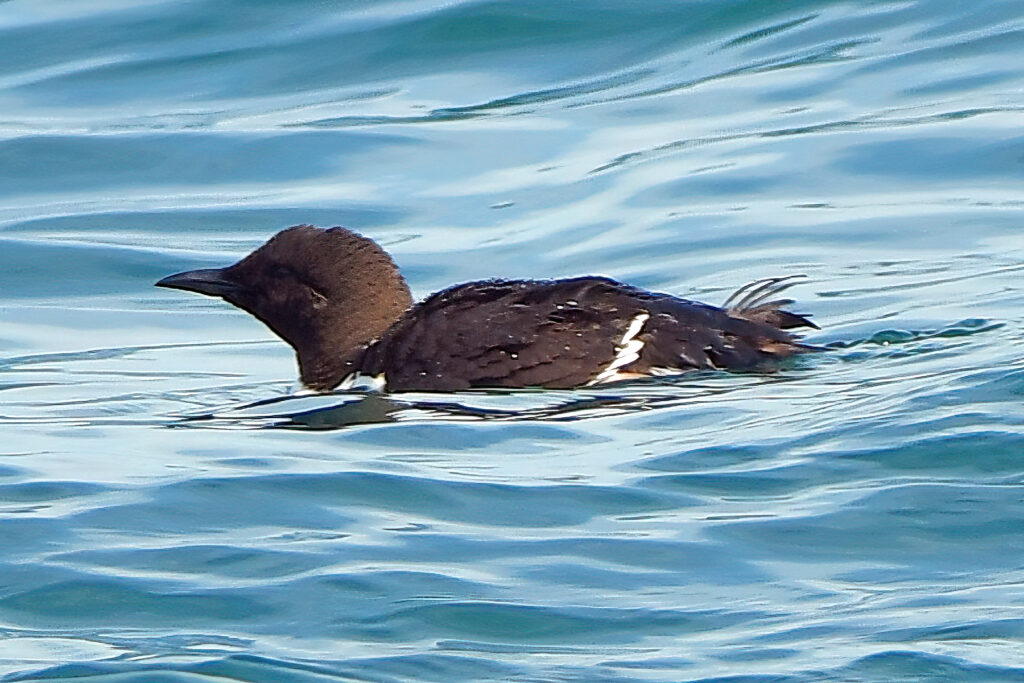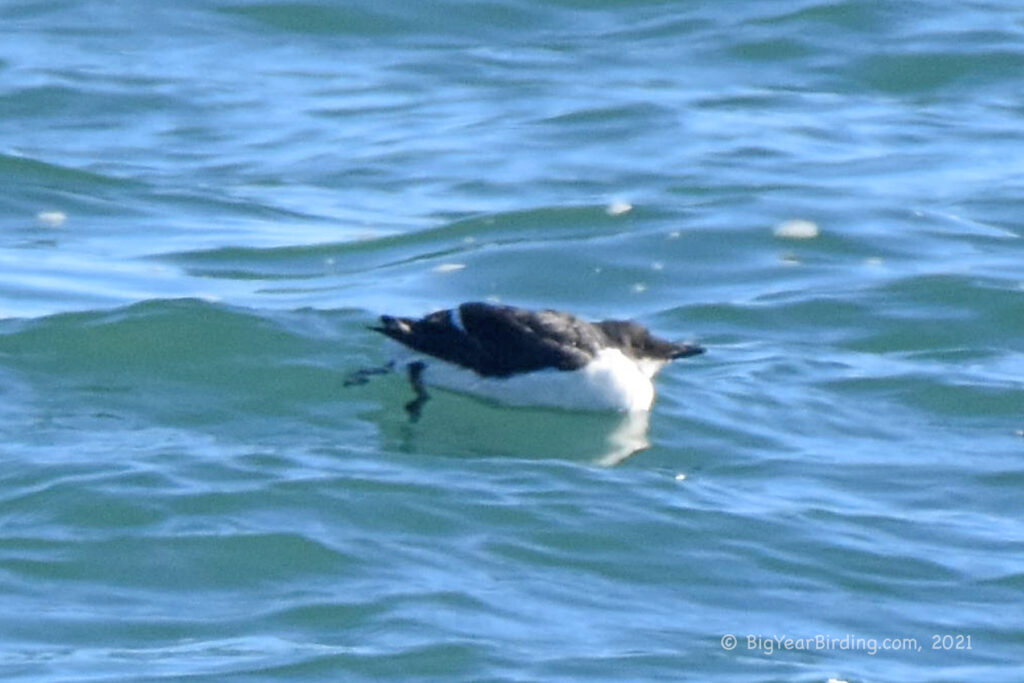
The Thick-billed Murre (Uria lomvia) is a seabird species that can be found in the northern regions of the Atlantic and Pacific oceans. This bird species is known for its thick, heavy bill, which is its most prominent field mark. Adults can reach up to 15.7 inches (40 cm) in length and weigh between 2.6 to 3.3 pounds (1.2 to 1.5 kg).

One of the most distinguishing characteristics of the Thick-billed Murre is its black and white plumage. During breeding season, the birds have a black head and back, while their belly is white. However, in non-breeding season, their plumage is more uniformly black. Another field mark of the Thick-billed Murre is the white crescent-shaped patch behind the eye, which is most visible in breeding adults.
Thick-billed Murres are migratory birds that breed in the Arctic regions of Canada, Greenland, and Russia. During winter, they migrate south to areas such as the North Sea, the Gulf of Alaska, and the eastern coast of the United States. Their migration distance can vary, but it is estimated to be around 620 to 1250 miles (1000 to 2000 km).
In terms of their behavior, Thick-billed Murres are known for their diving abilities. They can dive to depths of up to 230 feet (70 meters) in search of fish, their primary food source. During breeding season, they typically nest on rocky cliffs and lay a single egg. The chicks are fed by both parents and fledge around 30 to 40 days after hatching.

While the Thick-billed Murre is not considered to be globally threatened, it is classified as a species of special concern in Canada due to potential threats such as climate change and oil spills. Conservation efforts are being made to monitor their populations and protect their breeding grounds. Overall, the Thick-billed Murre is an interesting and important species that contributes to the biodiversity of the northern oceans.
